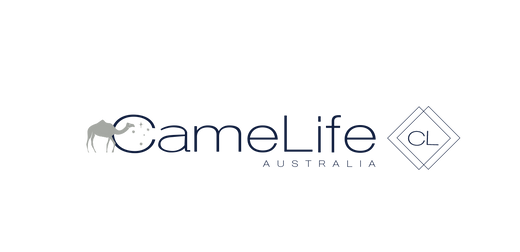Unlocking the Power of Wild Yam Cream: A Comprehensive Guide


At the heart of the humble wild yam plant lies diosgenin, a naturally occurring phytoestrogen. While it’s not exactly the same as the estrogen our bodies produce, diosgenin offers a gentle, plant-based alternative. This is why herbalists and natural health enthusiasts often recommend wild yam cream benefits for women navigating the hormonal ups and downs of life, particularly during menopause.
It may be the easing of hot flushes, balancing mood swings, or just offering a bit of extra support when your body feels out of sync; wild yam cream is earning its place on the bathroom shelf.
Wild yam has a rich history rooted in traditional medicine
Used widely across North America, Mexico, and parts of Asia, Wild Yam is more than just a go-to for hormone-related issues. Its diosgenin content has caught the attention of modern science as it is a compound that can create various medical steroids and mirrors some of the benefits you might expect from lab-made hormones—minus the synthetic aspect.
Wild yam is often mentioned as a natural remedy for hormonal imbalances, but does it actually increase oestrogen or progesterone in the body? The answer is a bit nuanced.
Diosgenin is a type of phytoestrogen. Phytoestrogens are plant-based substances that can mimic the effects of oestrogen in the body, albeit in a much weaker form. This is why wild yam is frequently recommended for easing symptoms associated with menopause, such as hot flashes, mood swings, and insomnia. The idea is that by introducing these gentle, oestrogen-like compounds, wild yam can help to rebalance hormone levels naturally.
However, it’s important to note that diosgenin can be chemically converted into steroids like progesterone in a lab setting, but this doesn’t happen in the human body. In other words, applying wild yam cream or consuming wild yam supplements will not directly increase your body’s oestrogen or progesterone levels. Instead, the phytoestrogens in wild yam may offer a more subtle, supportive effect, helping to ease hormonal symptoms without significantly altering hormone levels.
Wild yam’s arthritis benefits
Wild yam isn't just known for its potential hormone-balancing benefits, as mentioned above; it also has a history of use in treating joint and muscle pain, particularly conditions like arthritis. In fact, one of its many traditional names, "rheumatism root," harks back to the 19th century when it was commonly used to alleviate the discomfort of rheumatism—a term once broadly applied to joint and muscle pain.
The belief in wild yam's ability to soothe arthritis symptoms, especially rheumatoid arthritis, continues today. This is largely due to its reputed anti-inflammatory properties. Some studies suggest that wild yam can help reduce inflammation, which can ease the pain and swelling that are hallmarks of arthritis. For instance, a 2013 study published in BMC Complementary and Alternative Medicine explored the effects of a daily dried extract of wild yam on mice with induced inflammation. The results were promising, showing a significant reduction in inflammatory markers in the blood samples of these mice.
Wild yam packs a punch when it comes to nutrition
Wild yams are rich in potassium, which helps maintain healthy blood pressure, support muscle function, and balance bodily fluids. Alongside potassium, wild yams also contain small but valuable amounts of Vitamin C, Vitamin B6, and beta-carotene. Vitamin C offers immune-boosting properties, while Vitamin B6 supports brain health and helps regulate mood. Beta carotene is an antioxidant that helps create healthy vision and skin.
Wild yams are relatively low on the glycaemic index. This is due to their fibre content, which makes up about 2% of their overall weight. The fibre in wild yams helps slow down sugar absorption in the bloodstream, which can be particularly beneficial for those looking to manage blood sugar levels.
Wild yam's possible side effects
Like all herbs, wild yam can have side effects and may interact with other medications. One key consideration is for anyone with a personal or family history of hormone-related cancers, such as breast, ovarian, or uterine cancer. Although wild yam doesn’t act exactly like a hormone in the body, its estrogen-like effects mean there could be a slight risk of it influencing hormone-sensitive conditions. Consult with your doctor before using wild yam, especially if you fall into this category.
Pregnant women and nursing mothers should also steer clear of wild yam. The effects of wild yam on pregnancy and breastfeeding haven’t been fully studied, so it’s safest to avoid it during these times.
Another group that should exercise caution is people with protein S deficiency—a condition that affects blood clotting. There’s some concern that wild yam could increase the risk of clot formation due to its mild estrogen-like activity, so it’s crucial to talk to your doctor before incorporating wild yam into your routine if you have this condition.
The wild yam cream Australia trusts from CameLife
When choosing a wild yam cream, quality and integrity should be at the forefront of your decision, and that’s exactly what CameLife delivers. With a mission rooted in harnessing the unique benefits of camel milk, CameLife has become a leader in the skincare industry thanks to innovative and high-quality products that truly work.
CameLife proudly offers the best wild yam cream for menopause via a product that is crafted with premium ingredients from trusted sources, ensuring an effective, safe, and reliable product. As a team dedicated to understanding the unique properties of our products and how they can enhance skincare, let our expertise and the natural benefits of wild yam provide real, tangible results for you. If you are seeking natural solutions for hormonal balance and skin health, view our wild yam cream range today.





Leave a comment